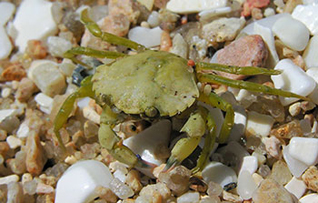 ent of Maine Resources (DMR) on Monday announced scientific verification that green crabs are threatening Maine’s third most lucrative fishery.
ent of Maine Resources (DMR) on Monday announced scientific verification that green crabs are threatening Maine’s third most lucrative fishery.At an event held in December, hosted by Marine Sea Grant and DMR, challenges and opportunities for non-native green crabs were examined. The green crab population has exploded in recent years and feed on bivalves like soft shell clams. Last year, soft shell clams generated about USD 15 million (EUR) in landed value and about USD 45 million (EUR) in overall economic benefit to Maine’s economy.
“We had conversations with industry last spring about the extent of the green crab problem and the consensus was that green crabs are a serious problem,” said Kohl Kanwit, DMR director of public health. “But we were uncertain about the extent and degree of the problem so we designed a survey to verify industry observations.”
DMR staff worked with University of Maine, Machias Professor of Marine Ecology Dr. Brian Beal to develop a plan for the survey.
“Our primary goal was to provide a snap shot of the locations and relative abundance of the green crab populations along the coast, and to raise the level of awareness of municipalities about green crabs and their impact on shellfish resources which are so important to our coastal economy,” said Kanwit. “As scientists, we also wanted to confirm the observations reported to us by industry.
“We were able to verify reports from harvesters that green crabs are present in most of the towns in numbers that are detrimental to bivalve shellfish resources.”
DMR Commissioner Patrick Keliher said the department’s position is the control if not eradicate the green carbs, calling the species’ destruction of eel grass beds as “nothing short of amazing.”
“Do we want to manage an invasive species for sustainability? My answer is no,” Keliher said. “…At the end of the day, we need to find a way to eradicate them.”





